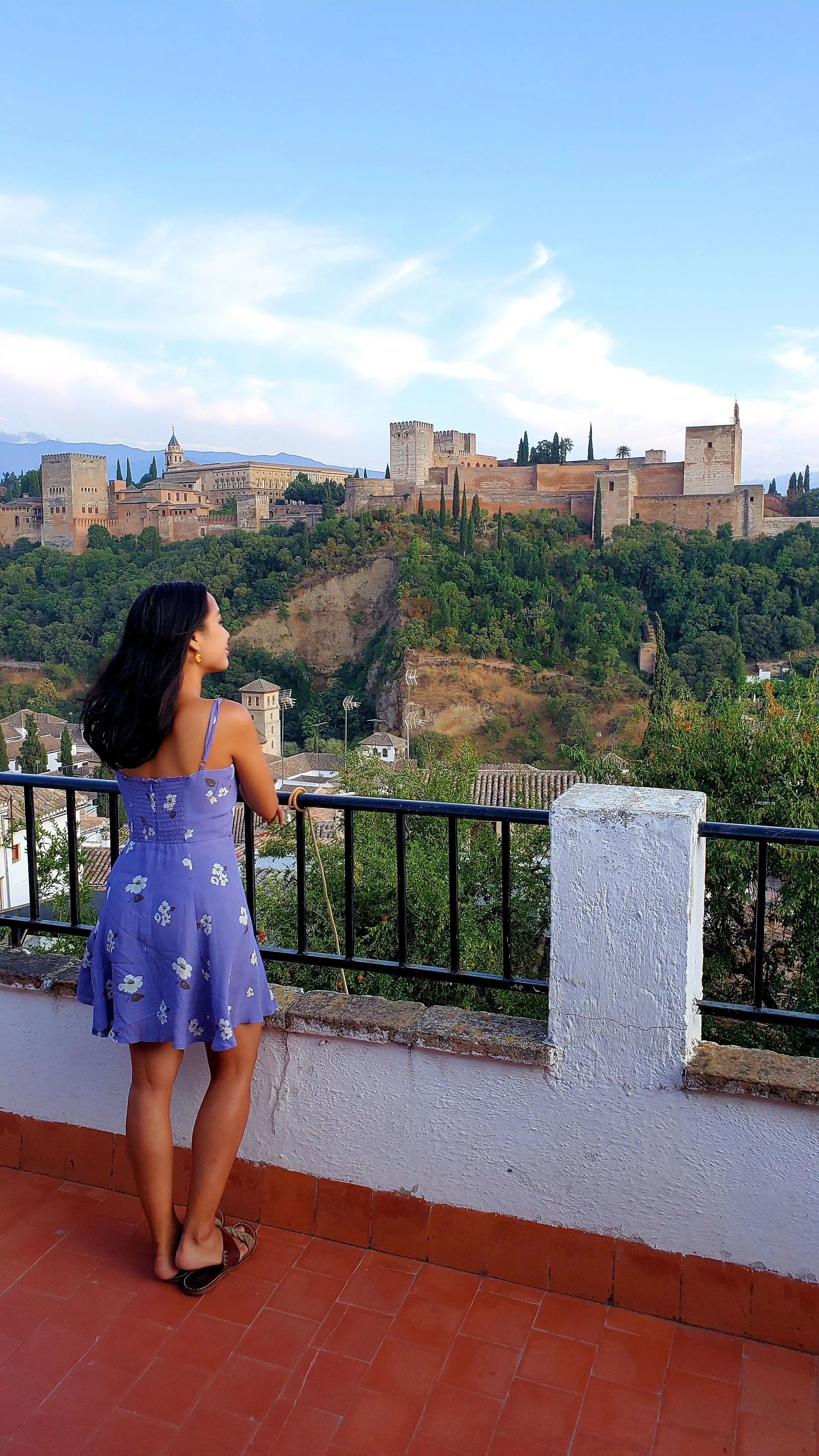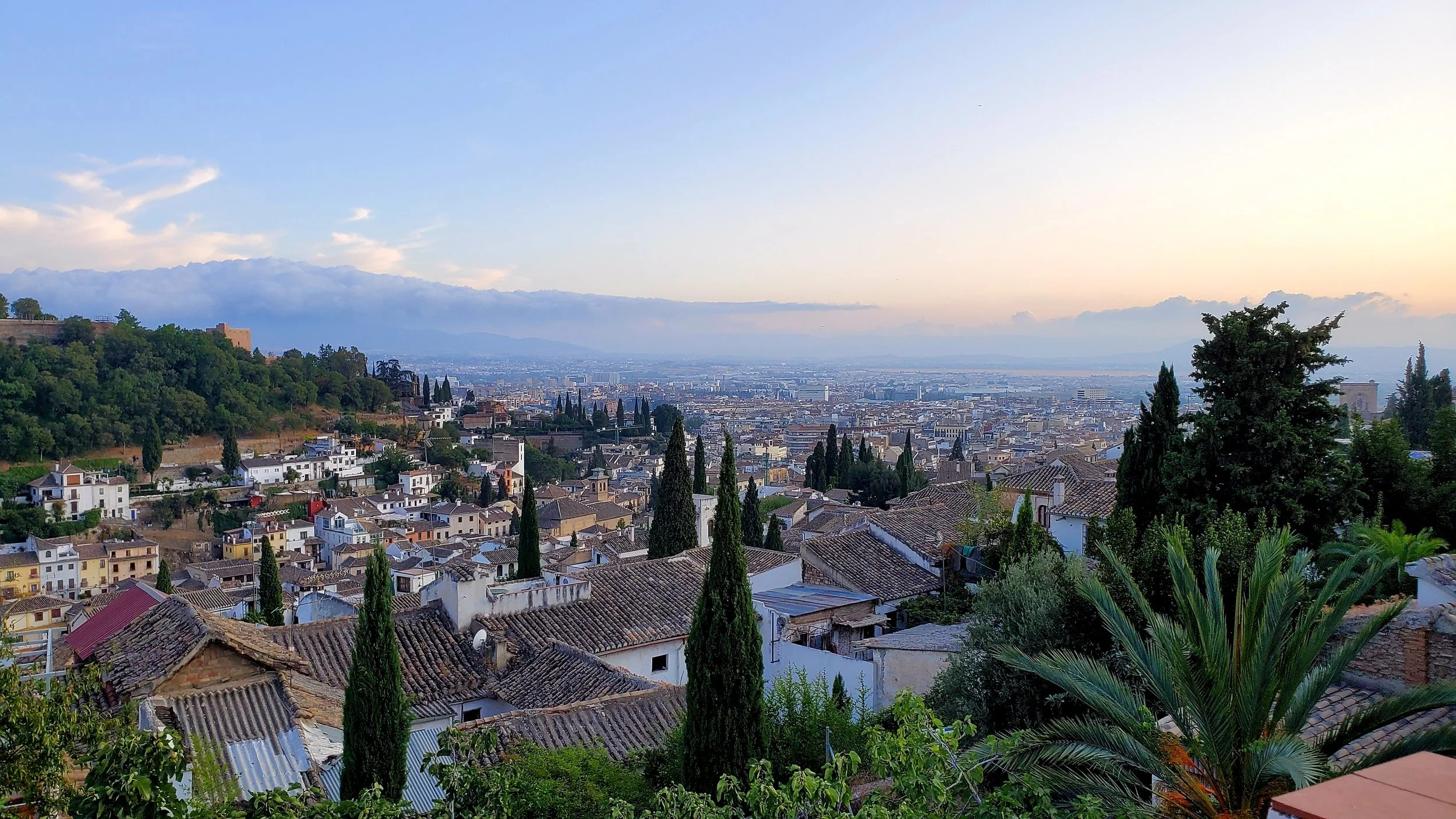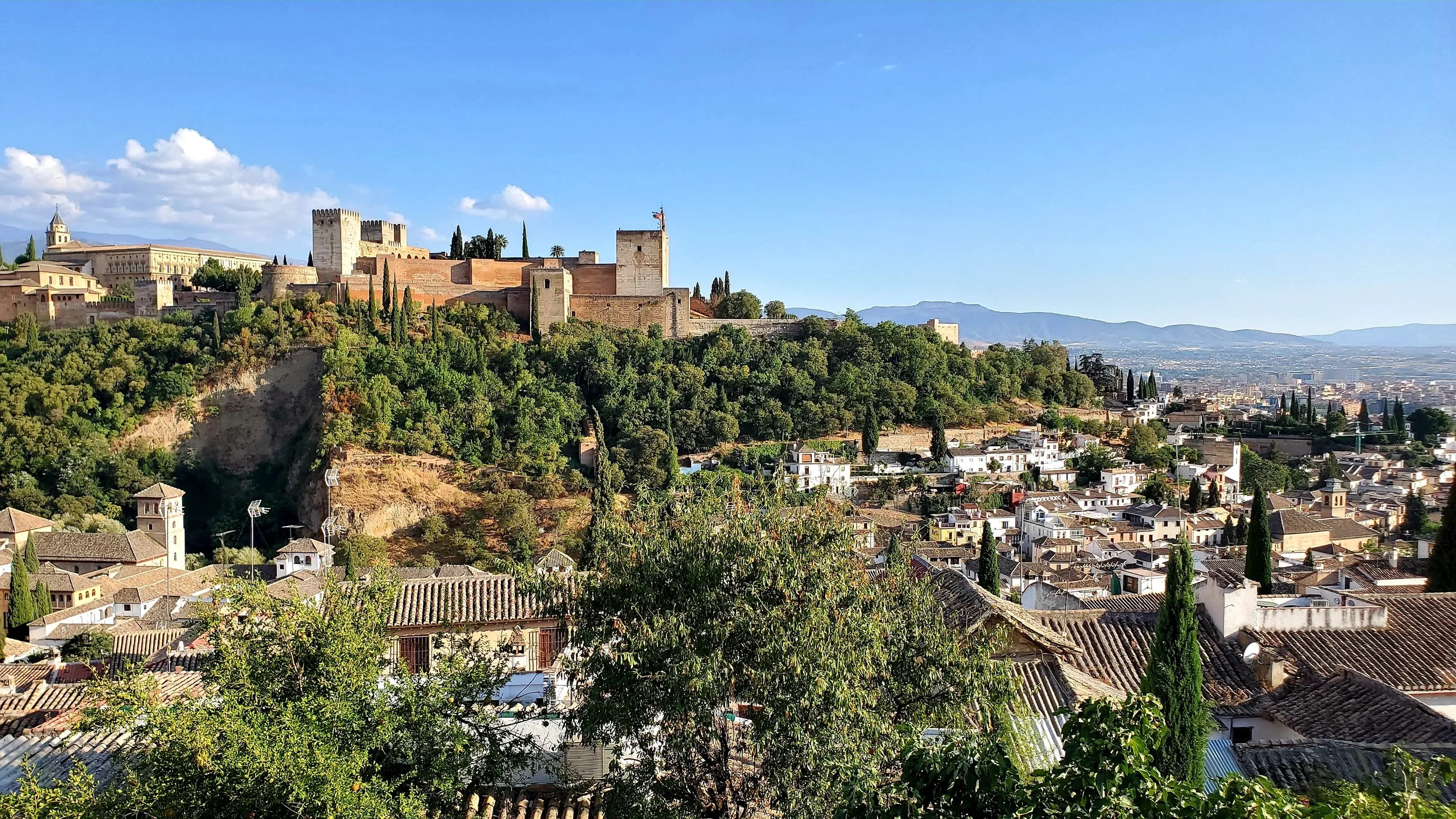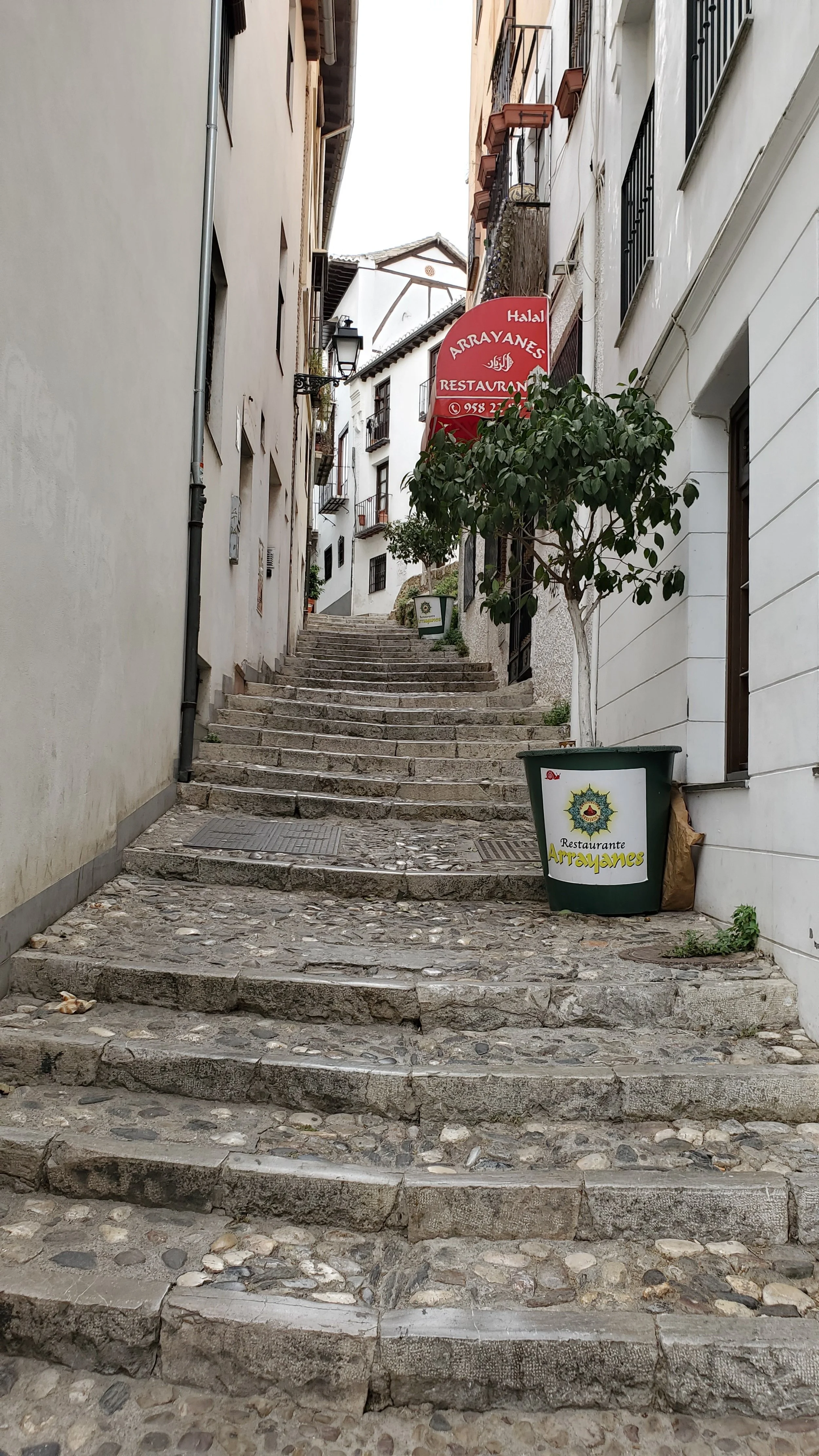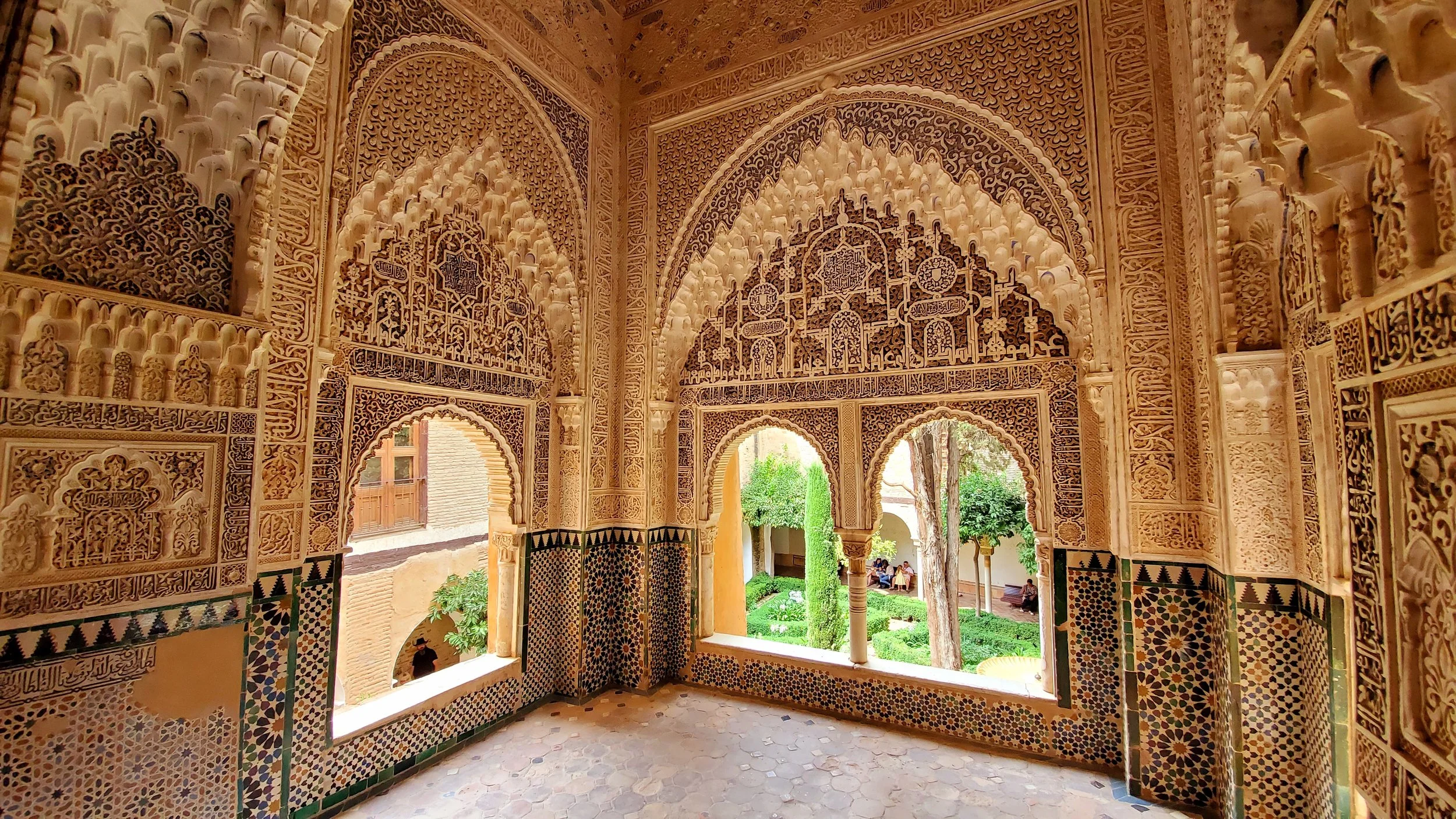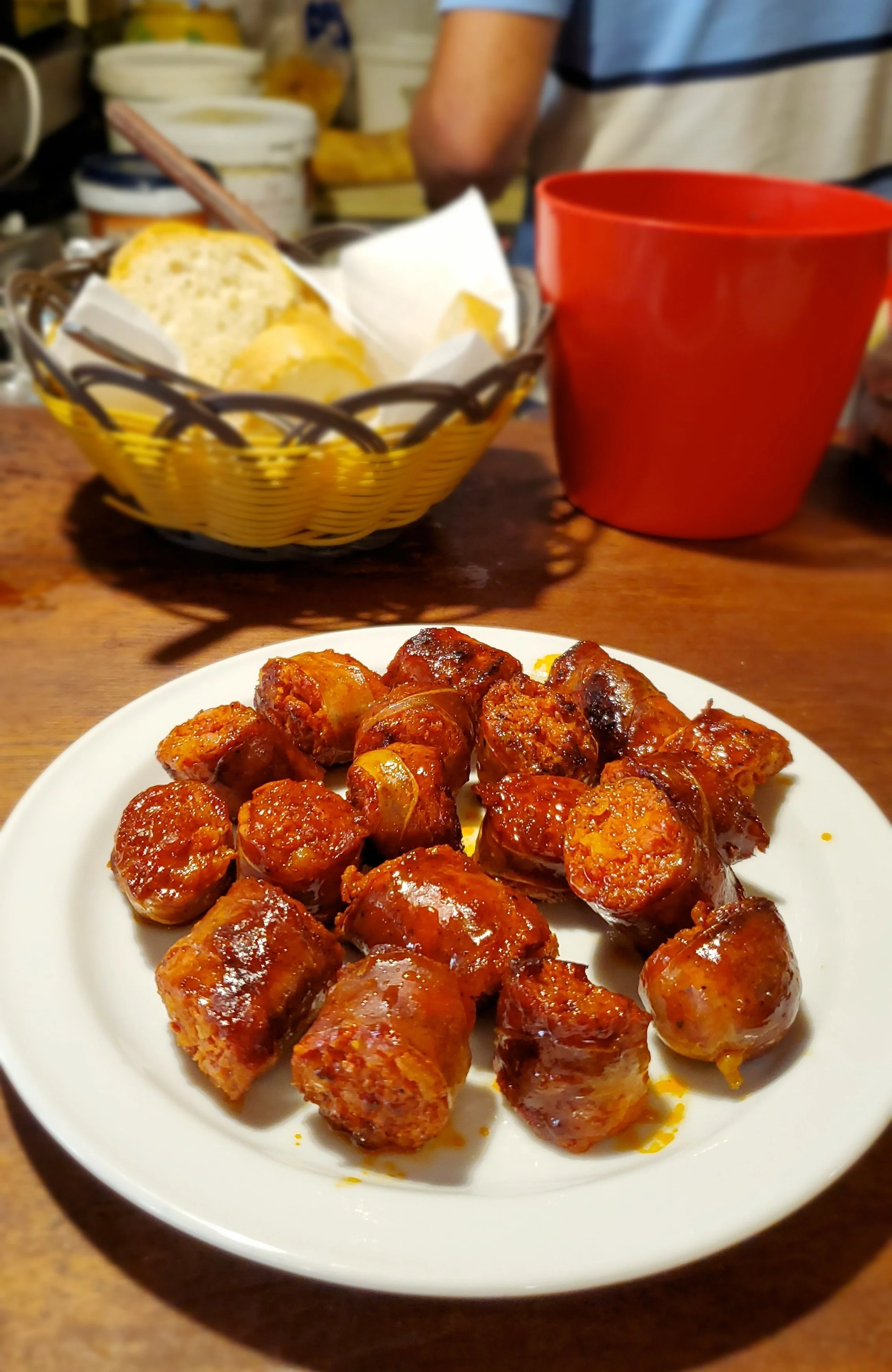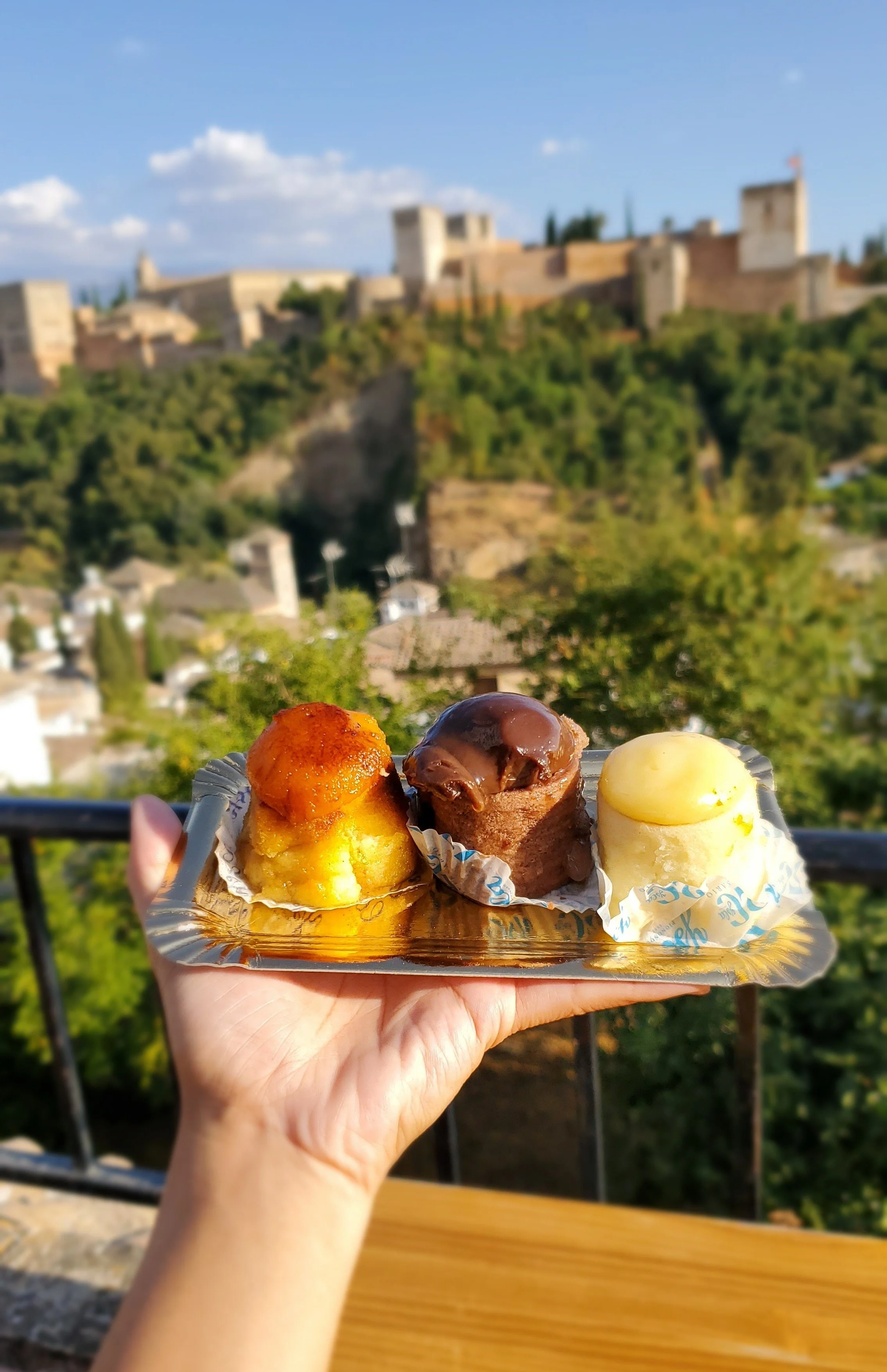Granada
Granada was the main reason I wanted to visit Spain one summer. While I’d never had much of an interest in Barcelona, Madrid, or even Sevilla (though, clearly I had been wrong about Sevilla), Granada has everything I’m passionate about: white-washed homes spilling down hills, seductive views of the Alhambra, diversity, a significant Arab influence, and incredibly cheap food.
While one obviously comes to Granada for the Alhambra, I fell in love with this city for its views and its soul. I spent hours sitting on my balcony and aimlessly wandered the streets. It’s impossible not to be enchanted here.
Stay
I stayed at an Airbnb in Albayzín, a neighborhood that proudly retains the narrow winding streets of its Medieval Moorish past and has been declared a World Heritage Site. Albayzín is so hauntingly beautiful that you almost want to get lost in it, like you do in Venice.
I chose the Airbnb specifically for its view. My room was on the second floor, with a direct view of Alhambra. And the rooftop, which is where I spent siestas and ate breakfast every morning, had an even better view, and I loved not having to trek out to the crowded viewpoint nearby, where all the other tourists had to wait around to share the view.
Do
The Alhambra is a palace, citadel, and fortress that sits on a small plateau overlooking the entire city, enhanced by the backdrop of the Sierra Nevada mountains. While Europe slumbered through the Dark Ages, the Moors were creating magnificent palaces like the Alhambra, with ornate stucco, plaster stalactite ceilings, ceramic tiles, scalloped windows that perfectly frame views of Granada, lush gardens, open-air courtyards, and water—a precious symbol of life back then—everywhere.
It’s the last and greatest Moorish palace in the world and once housed a city of a thousand people fortified by a 1.5-mile rampart, built in the 13th century for the Nasrids (one of the ethnic groups of Spanish Muslims). In the 15th century, King Ferdinand and Queen Isabel expelled the Moors from Granada and moved into Alhambra, and it was here that Christopher Columbus requested royal endorsement to fund his sea voyage that year. The Holy Roman Emperor eventually took over, but because he respected the Moorish palace, built his own palace using the existing Alhambra instead of destroying everything.
Moorish craftsmanship of Alhambra is first-class. Lead fittings between the pre-cut section of the columns allow the structures to flex during earthquakes, preventing destruction.
One of the most interesting things to do in Granada is to visit Alcaicería for Granada’s Great Bazaar, especially if you haven’t been to a Muslim country before. Like the souks I’ve visited in Morocco, Jordan, Egypt, and Turkey, you can find spices, precious goods, and other souvenirs. The original Alcaicería was built in the 15th century and survived until the 19th century, when a fire destroyed it. A replica was built, but only half the size of the original labyrinth.
Nearby is Corral del Carbón, a caravanserai (protected place for merchants to rest their animals, spend the night and eat). This is the only surviving caravanserai of Granada’s original fourteen. Granada was a stop on the Silk Road, as silkworm-friendly mulberry trees flourished in the countryside.
Eat
What a city for food! Granada is one of the only remaining cities in Spain to offer a free tapa with every drink, which makes eating out in Granada almost ludicrously cheap. Most bars will cook a large pot of something and hand out a small plate of the dish with every drink. It’s a brilliant way to eat, but will sadly never exist in America.
My favorite tapas were at El Tabernáculo (a tiny tapas bar filled with kitschy religious decorations), Bar Los Diamantes (multiple locations throughout the city), Bodegas Castaneda (always crowded), and Taberna La Tana (perfect for wine lovers).
Tips
Tips
Try piononos, the small, sweet cylindrical pastries from this city. Casa Ysla offers piononos in various flavors.
My default drinks to order at any bar in this region are tinto (house red), tinto de verano (house red with carbonated water or lemonade, served with ice), vermút (fortified white wine we know as vermouth, sometimes served with soda), or a cerveza (beer).
Take in the views of the city at Mirador de la Churra. While I didn't have to go to the crowded Mirador San Nicolas because the view from my Airbnb was basically the same thing, I did go to Mirador de la Churra for an incredible view of Albayzín. Most tourists don't know about this viewpoint, as it was completely empty when I was there.
As soon as you know when you’ll be in Granada, book your tickets to Alhambra because tickets sell out months in advance. You must enter within 30 minutes of your selected time.
